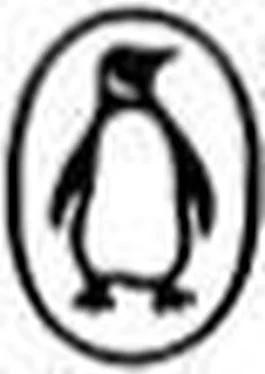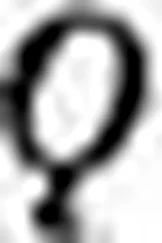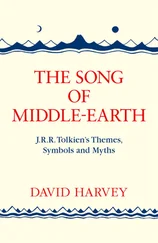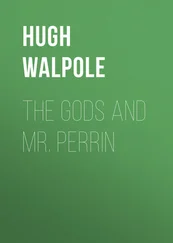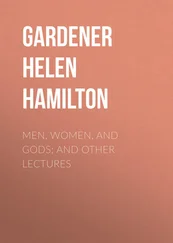Davidson, H. - Gods and Myths of Northern Europe
Здесь есть возможность читать онлайн «Davidson, H. - Gods and Myths of Northern Europe» весь текст электронной книги совершенно бесплатно (целиком полную версию без сокращений). В некоторых случаях можно слушать аудио, скачать через торрент в формате fb2 и присутствует краткое содержание. Жанр: Старинная литература, на английском языке. Описание произведения, (предисловие) а так же отзывы посетителей доступны на портале библиотеки ЛибКат.
- Название:Gods and Myths of Northern Europe
- Автор:
- Жанр:
- Год:неизвестен
- ISBN:нет данных
- Рейтинг книги:5 / 5. Голосов: 1
-
Избранное:Добавить в избранное
- Отзывы:
-
Ваша оценка:
- 100
- 1
- 2
- 3
- 4
- 5
Gods and Myths of Northern Europe: краткое содержание, описание и аннотация
Предлагаем к чтению аннотацию, описание, краткое содержание или предисловие (зависит от того, что написал сам автор книги «Gods and Myths of Northern Europe»). Если вы не нашли необходимую информацию о книге — напишите в комментариях, мы постараемся отыскать её.
Gods and Myths of Northern Europe — читать онлайн бесплатно полную книгу (весь текст) целиком
Ниже представлен текст книги, разбитый по страницам. Система сохранения места последней прочитанной страницы, позволяет с удобством читать онлайн бесплатно книгу «Gods and Myths of Northern Europe», без необходимости каждый раз заново искать на чём Вы остановились. Поставьте закладку, и сможете в любой момент перейти на страницу, на которой закончили чтение.
Интервал:
Закладка:
Balder is called the son of Odin, and Snorri and many others after him have assumed that this makes him a god. It has already been indicated (p. 109) that certain features in Snorri’s account of his death seem to be influenced by the cult of the gods of the Vanir. On the other hand, Saxo thought of Balder as a warrior on earth, who was said to be Odin’s son only in the sense that he was one of his followers, or that he was born to some human mother visited by the god. He received special favours from his celestial father as did many others of Odin’s famous heroes. Allusions to Balder in the poems, as we have seen, do not appear to contradict this picture. In a study on Balder, de Vries 1has given weighty reasons for accepting the story of his death as one belonging among the tales of Odin’s heroes rather than among the myths of the slaying of a god. It could have originated as a story of rivalry between two brothers, both ‘sons of Odin’, who were led by some tragic accident to become slayer and slain. Such a story was known to the Anglo-Saxons, and is briefly referred to in Beowulf . The son of King Hrethel of the Geats, Herebeald, was accidentally shot by his brother Haethcyn with an arrow, and slain. A strange and moving passage follows the brief account of the happening, and the grief of the father over his dead boy – whom in the circumstances he is unable to avenge – is compared to that of a father whose son dies on the gallows. A youth hanged in this way must have died either as a criminal or – in heathen days – as a sacrifice to Wodan. The juxtaposition of the names Herebeald and Haethcyn is perhaps significant; it was pointed out long ago that they bear a resemblance to those of Balder and Hoder of the Norse story. Death upon the gallows is associated with the followers of Wodan, and these points led to the suggestion that here we have an early heroic version of the Balder story remembered in Anglo-Saxon England. As in Saxo, we have here two princely warriors, one of whom, perhaps through the power of a curse or hostile magic, unwittingly becomes the slayer of the other.
The story of Balder is perhaps the most tantalizing of all the puzzling myths which have survived in the north. I have been unable to deal with it in detail, because this would mean going far beyond the scope of this book. But it seems necessary to show that Snorri’s story, for all its beauty and pathos, may have misled us in our estimate of Balder. Under his magic touch, Balder has taken on the lineaments of the dying god, derived from the cult of the Vanir. If however Balder in earlier tradition was a human hero struck down in spite of the favour of the gods, and against the will of Odin, he could then belong to the company of great northern heroes whose exploits belong partly to this and partly to the other world.
Chapter 8
The Beginning and the End
There is no doubt that before the universe was created there was no place in which these created gods could have subsisted or dwelt. And by ‘universe’ I mean not merely heaven or earth which we see with our eyes, but the whole extent of space which even the heathens can grasp in their imagination.
Letter of Bishop Daniel of Winchester to St Boniface, A. D. 723–4
When Snorri came to write his account of the gods, he assumed that they dwelt in a community and had a definite place in which to live, just as the deities of Ancient Greece were said to dwell on Mount Olympus. The Aesir and the Vanir lived together in Asgard, and Asgard itself formed part of a larger world-picture. The World Tree, Yggdrasill, formed the centre of the universe, and beneath its roots lay three regions, those of the gods, the giants, and the dead. This of course is an oversimplification of the deeply-rooted beliefs of men in the Other World and its powers. In the myths there is no exact boundary to hedge in the giants, to confine the dead to a realm far from their burial mounds and the hills of home, or to wall in the gods in an upper region far above mankind. These different realms however meant something significant to men, and recognition of their existence went far deeper than the wealth of stories, many frivolous or half-mocking, which were woven about them. The World Tree formed the fixed centre of this series of worlds which were believed to have had a definite beginning and to be destined to eventual destruction.
1. The World Tree
The idea of a guardian tree standing beside a dwelling place was once a familiar one in Germany and Scandinavia. We have even a few examples left in the British Isles, some of which, as at the Old Manor House at Knaresborough, are trees round which the house itself has been built. 1Not only the family dwelling, but the house of the gods, the temple, had its own guardian tree in heathen times. The great heathen temple at Uppsala, where both Odin and Freyr were worshipped, is described in the eleventh century by Adam of Bremen in words which sound like an echo of the description of Yggdrasill in the poems:
Near to this temple is a very great tree, stretching its branches afar, and green both in winter and summer. No one knows what kind of tree it is.
Many scholars have thought that they knew, and elaborate theories have been built on the conviction that it was the sacred yew, the evergreen tree. This cannot however be proved from the literature, where more than one conception of the tree can be found. In poetry and prose, the word askr , ‘ash’, is used. We know however that in parts of north-western Europe the oak was especially sacred to the gods, and particularly to Thor, and that like Yggdrasill the sacred oak often had a sacred spring at its foot. There are hints too of a tree which provided food and drink for the gods, an idea which probably came from the Near East in the first place. 2
Yggdrasill was certainly a guardian tree, and when the end of the world drew near, it was said to shake and tremble. Its doom, like those of the sacred trees cut down in Germany by Christian missionaries, was held to be inseparably linked with that of the gods whom it watched over and protected. But it was more than this: it was also the World Tree, the symbol of universality. It was said to spread its limbs over every land, and the fact that it formed a link between the gods, mankind, the giants, and the dead meant that it was visualized as a kind of ladder stretching up to heaven and downwards to the underworld. This conception of a road between the worlds is one which is familiar in the beliefs of the shamanistic religions. It is developed with rich abundance of detail in the mythologies of the peoples of north-eastern Europe, northern and central Asia, and even further afield, in the regions where shamans are trained to cultivate the mantic trance, and claim to have the power to send their spirits out of the body for long journeys to the other world. In these various mythologies, the tree which links the different regions plays an essential part.
The tree marked the centre of the universe, and united the cosmic regions. Some Finno-Ugric tribes believed that the gods feasted upon its fruits, and that souls were born among its branches. It was characteristic of this World Tree that its life was renewed continually: thus it became a symbol of the constant regeneration of the universe, and offered to men the means of attaining immortality. Sometimes it was symbolized in shamanistic ritual by a post with steps cut in it, a ladder, or a small birch tree, up which the shaman climbed to indicate his ascent to the heavens. When he entered into his state of ecstasy, he was believed to pass through a series of heavens, one above the other, until at last he penetrated in his flight into the highest realm of the gods. So in Norse mythology the beliefs about the nature of the world of the gods are inextricably linked with the powerful symbol of the World Tree. This marked resemblance to the beliefs of the Finno-Ugric and other eastern peoples is very significant for our understanding of the religious thought of the heathen peoples of the north.
Читать дальшеИнтервал:
Закладка:
Похожие книги на «Gods and Myths of Northern Europe»
Представляем Вашему вниманию похожие книги на «Gods and Myths of Northern Europe» списком для выбора. Мы отобрали схожую по названию и смыслу литературу в надежде предоставить читателям больше вариантов отыскать новые, интересные, ещё непрочитанные произведения.
Обсуждение, отзывы о книге «Gods and Myths of Northern Europe» и просто собственные мнения читателей. Оставьте ваши комментарии, напишите, что Вы думаете о произведении, его смысле или главных героях. Укажите что конкретно понравилось, а что нет, и почему Вы так считаете.
